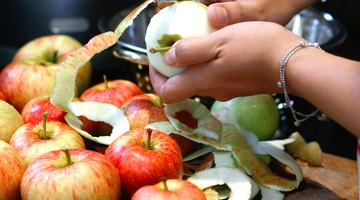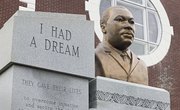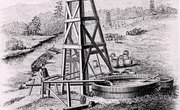Before 1864, there was no machine or mechanical aid that would allow a kitchen worker or farm wife to peel apples quickly. The tedious task was performed by hand with a knife. That changed with the labor-saving device invented by David Harvey Goodell, a man who later became the governor of New Hampshire. He called his first invention “the Lighting apple parer.” At first, a New York firm’s marketing efforts sold only 2,400 over 2 years. Dissatisfied with the outcome, David Goodell took to the road and became a traveling salesman. In less than a month, he sold 24,000 apple parers.
Significance
The apple peeler was the first of the labor-saving machines David Goodell designed or improved. The firm he founded, the Goodell Company, also manufactured a number of kitchen devices still in use today. In addition to his inventions, David Goodell became a prominent Republican in New Hampshire politics. He served in the state House of Representatives from 1876 to 1879, and on the state’s Board of Agriculture from 1876 to 1883. He served as governor from 1889 to 1891.
Types
The original design of David Goodell’s apple peeler sold well into the 1970s. His company’s other products included a cherry stoner, which was used to pit cherries, a potato peeler and apple slicers and corers. True to his farming heritage, he also sold farm implements such as the Cahoon broadcast seed spreader. The variety of products was popular, and the company had 150 employees by 1875 with a payroll of $50,000 a year. By 1915, the company had 250 workers on its payroll.
Identification
The Lightning apple parer is clearly marked “Goodell Co.” So, too, are the company’s other models. However, not all apple peelers from this period were manufactured by the same company. Attempts to design efficient peelers had been ongoing for decades before David Goodell received his patent. For instance, Pennsylvanian Moses Coates patented a type of apple parer as early as 1804. But it was Goodell who became known as the inventor of the apple peeler with his efficient and popular design.
History
David Goodell was born in 1834 in Hillsborough, New Hampshire, to a farming couple, Jesse and Olive Atwood Goodell. He was their only child. The small family sold their farm in 1841 and relocated to another farm in Antrim, New Hampshire. Encouraged by his parents to obtain an education, David Goodell entered Brown University. Despite a keen aptitude for math and Latin, he had to leave his studies after less than 2 years because of poor health. He settled down with the intention of remaining on the family farm but later became a teacher in Massachusetts. Married twice and the father of one son and one daughter, he died in January 1915.
Expert Insight
Goodell and his family figured prominently in New Hampshire’s business and political spheres in the 19th century, according to “The Granite State Monthly,” compiled by Oris Grant Hammond and published in 1883 by the Granite Monthly Company. Raised as a Baptist, David Goodell supported Prohibition. In his early life, he seemed dissatisfied with the desk-bound life of a teacher. He went into business, later buying the company that had employed him and taking on its debts. He worked hard to pay them all and transformed the business into the Goodell Company, which he later expanded.








